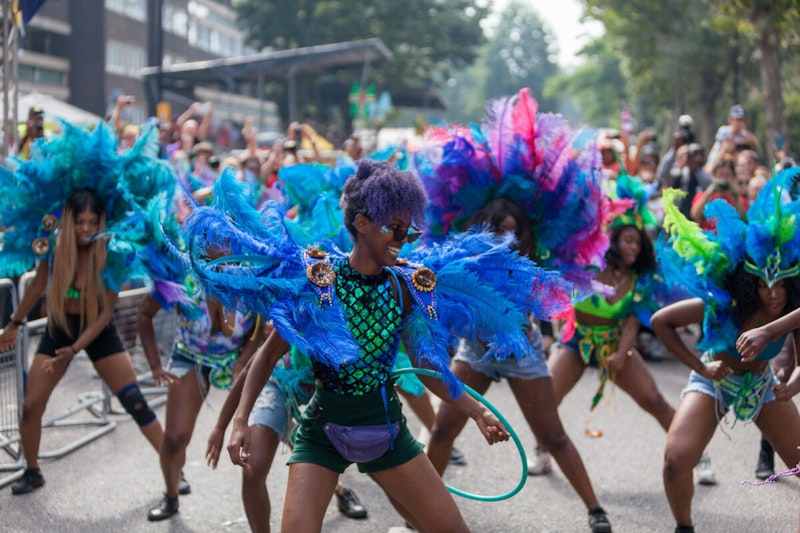Study Notes
GCSE Geography | How has London grown? (UK City Study: London 2)
- Level:
- GCSE
Last updated 10 Mar 2025
In 1800 London was the largest city in the world just over 1 million people, and during the Industrial Revolution the city attracted migrants from all over the country to work in the docks and in factories. The population grew rapidly and hit a peak of about 8.6 at the start of World War II - however London was badly damaged during the war so the population fell, and then continued to do so as bombed housing was demolished and more people moved out during the 1950s and 1960s. During the 1970s and the early 1980s the population declined further as deindustrialisation took hold and the closure of the docks meant the loss of thousands of jobs.
Since the mid-1980s the population has increased and London is currently home to around 9.1 million people. The city has had fairly rapid population growth in the last two decades - the UK census recorded a population of 7.2 million in 2001, 8.2 million in 2011 and 8.8 million in 2021. London is predicted to become a megacity with over 10 million inhabitants by 2030.

London's youthful population
London's population is younger than all other UK cities - this is because young adults are attracted to the city either to study in one of the 40 universities or the wide range of job opportunities. Because the population is quite youthful then the birth rate will naturally go up and therefore natural increase will occur. However, because London is such an expensive city to live in, many young families choose to move out beyond the boundary of Greater London in order to have more living space. Migrants coming into the city tend to be younger than those leaving, so therefore create a more youthful population for the city.
Migrants in London
Net migration in London has increased in the last decade - this is the difference between the number of people moving into the city and the number of people moving out. London's population growth rate is twice that of the UK as a whole - almost 200,000 people arrive from overseas each year, and around 130,000 babies are born, compared to approximately 95,000 who are moving away. In 2023 the net migration was 154,000, i.e. the population increased by this figure.
London receives more migrants than anywhere else in the UK due to its status as a major employment centre and the capital city, therefore potential migrants have an increased awareness of it, but also as a place with a long history of migration and therefore established ethnic minority communities which are attractive to others from that cultural background.
London is the UK's most diverse city and one of the most multicultural cities in the world - around 41% of its population were born outside the UK, and over 300 languages are spoken.
London has seen many waves of immigration throughout history, including from Ireland, Europe, the Caribbean, and Asia...
Early migration
The Romans established a settlement in what is now London, called 'Londinium, around 43 AD. Anglo-Saxons, settled in London after the Romans left Britain around the 5th century, while the Normans took control of London following the Norman Conquest in 1066.
European
Huguenots (French Protestants) began moving to London as refugees in the 16th century and continued through the 18th century, fleeing from religious persecution from the Catholic monarchy in France, settling in Spitalfields and Bethnal Green, just outside the city walls (although now part of East London).
Irish
In 1841, 4% of Londoners were from Ireland with many coming over to work in the docks - this number increased after the Great Famine (1845-52) as potato crops that Ireland was dependent on for food were decimated by disease leading to a period of starvation and emigration.
Jewish
Around 150,000 Eastern European and Russian Jewish refugees arrived in London between 1880 and 1914, fleeing religious persecution and economic hardship. The majority of them settled in the East End. Between 1933 and 1945 another 80,000 refugees arrived, mostly settling in north-west London. There are several established Jewish areas in London today, including Golders Green in north-west London, home to many kosher restaurants, butchers, and shops.
Caribbean
In the late 16th century, Africans were brought to London as slaves. After slavery was abolished in 1834, more Caribbean people came to London as students, professionals, and government officials. In 1948, the ship 'Empire Windrush' brought the first passengers from Jamaica to London, in response to the British government encouraging immigration from Caribbean countries to address labour shortage after World War II. More than 500,000 people arrived in the UK from Commonwealth countries between 1948 and 1971 - known as the Windrush Generation. As a result, London has a large and vibrant Caribbean community, particularly concentrated in neighbourhoods like Brixton, Hackney, Shepherds Bush and Notting Hill (famed for its annual carnival, pictured below).

South Asian
London has a large south-Asian community, including the Bangladeshi community who are concentrated in east London in boroughs such as Tower Hamlets and Hackney. Areas such as Spitalfields and Brick Lane in Shoreditch are known for their Bangladeshi culture and it is evident in the cuisine on offer (for example, in the Boiler House Market Place, pictured below) and the street art on display. The first Bangladeshis arrived in the UK in the 1920s in small numbers, but the majority of the current Bangladeshi community arrived in the 1970s following the 1971 Bangladesh Liberation War which led to mass migration.

Chinese
The first Chinese migrants came to London in small numbers in the early 1800s to work on British ships. The first large-scale settlement of Chinese people in London was in the 1950s, and a second wave of immigrants came from Hong Kong in the 1990s. There are many Chinese community centres across London, particularly in northern boroughs, and most notably the famous Chinatown in the centre close to London's West End and Covent Garden (pictured below).

You might also like

Gapminder for population and global development
19th March 2015

Two Billion Miles - a resource for teaching the refugee crisis
6th November 2015

Climate Change, Water and the Economy
29th August 2017
UN states agree deal to manage global migration crisis
16th December 2018

Refugee stories behind the statistics and a UK policy shift
29th June 2021